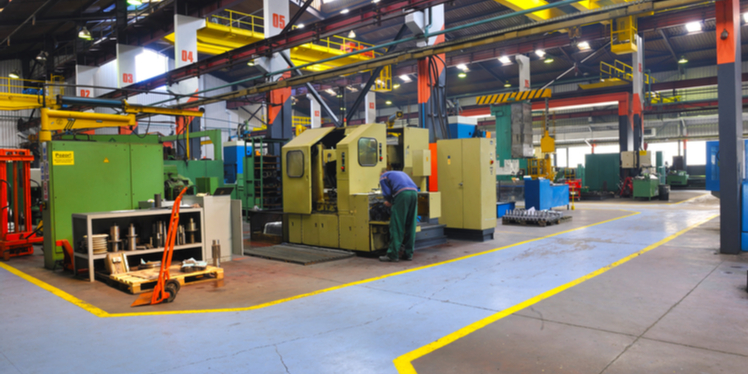Optionality is Key to Managing Supply Chain Risk in Manufacturing
Risk preparation and optionality
The global pandemic has added an extra layer of complexity and disruption to the manufacturing supply chain. In response, manufacturers and shipping companies worldwide are shifting gears, re-evaluating their strategies and risk profiles, and scrambling to keep up production. Despite these efforts, the outbreak has already had a significant impact on production, and it's likely it will negatively impact the global economy throughout 2020, with even manufacturers that have no direct connection to China feeling the ripple effects.
Already, the manufacturing industry is forecasting major shortfalls for the year. For many businesses the inability to get raw materials and intermediate goods out of China has hindered their ability to manufacture finished products. Even if they're able to source the raw materials, the shortage of shipping capacity in both sea and air has made shipping logistics nearly impossible or prohibitively expensive in some circumstances. According to the Wall Street Journal, numerous ocean cargo vessel sailings have been cancelled and the normal turnover of containers stalled, creating an imbalance, pushing up transportation costs and causing significant delays. These ocean vessel disruptions, and the consequent disruption in truck freight, will only prolong the slump we were already seeing in the freight industry.

Which industries will be impacted?
Multiple industry sectors are feeling the impact, including metal fabrication and electronics components, as well as the oil & gas markets and the transportation industry. A strong secondary effect will hit the retail and CPG industries sharply.
Manufacturers can still build resilience into their supply chains, manage the present risk and mitigate future risk with increased visibility of the end-to-end supply chain and a Total Value Optimization (TVO)™ driven focus on optimizing value creation, improving transparency and visibility and transforming operations.
Sea, air and land all feel the impact
The most immediate transportation impact is sea and air freight, but there will be a secondary impact on the domestic trucking industry. Over-the-road and intermodal freight was already seeing major weaknesses before the outbreak due to the combined impact of the trade war and a nationwide labor shortage. Ocean cargo and air freight felt the pinch of the pandemic immediately, and trucking will get a later hit as ocean and air freight hits the ports in lower volumes.
Even when Chinese factories are able to resume full production and ports are fully operational, there will continue to be delays for the foreseeable future.
How do we keep disruptions from happening?
Most manufacturers had enough inventory to last out the first quarter, but they will feel the pinch in the second quarter as ship availability comes into short supply. Some may turn to air freight, but that is a temporary solution at best that will result in significantly higher transportation costs. The bigger question manufacturers need to ask now is, “How do we prevent this disruption from happening again?“ Building resilience into the supply chain will go a long way towards helping absorb the shock from future storms.
A three-step roadmap forward: stabilize-recover-rebalance
The current pandemic is the latest in a series of global risk events which have exposed vulnerabilities in the supply chain. While the best-case scenario would of course be to have already prepared for this unexpected outbreak long before it happened, the question now is what is the way forward? It's a sobering fact every manufacturing executive will need to re-evaluate their supply chain and rebalance it to manage supply chain risk while driving EBITDA, cash & growth. Maine Pointe's approach to supply chain risk management driven by a Total Value Optimization (TVO)™ strategy, quickly develops a roadmap to create supply chains as a competitive weapon and move an organization through the three key stages; stabilize-recover-rebalance, providing an accelerated pathway to overcoming the short-term challenges and building the foundations for a resilient, digitally enabled hyper-agile supply chain of the future.
This is an abridged version of a Maine Pointe perspective paper which looks more closely at the questions raised.
Click here to read the full paper.
About Maine Pointe
Maine Pointe, a member of the SGS Group, is a global supply chain and operations consulting firm trusted by many chief executives and private equity firms to drive compelling economic returns for their companies. We achieve this by delivering accelerated, sustainable improvements in EBITDA, cash and growth across their procurement, logistics, operations and data analytics. Our hands-on implementation experts work with executives and their teams to rapidly break through functional silos and transform the buy-make-move-fulfill digital supply chain to deliver the greatest value to customers and stakeholders at the lowest cost to business. We call this Total Value Optimization (TVO)™.
Maine Pointe's engagements are results-driven and deliver between 4:1-8:1 ROI. We are so confident in our work and our processes that we provide a unique 100% guarantee of engagement fees based on annualized savings. www.mainepointe.com
